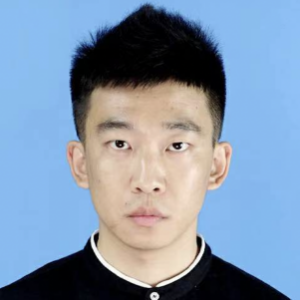Navigation
Nowadays, as one of the most critical infrastructures, the power system has developed into a cross-regional, multi-voltage level, largescale interconnected and complex artifcial network. With the rapid development of communication, control and computer technology (3C), the interaction between the conventional power system and the information system becomes increasingly complicated and mutually dependent, which accelerates the conventional power system evolving into a grid cyber physical system (GCPS). The widespread application of advanced information and communication technology (ICT) is comparable to the “Sword of Damocles”, which not only improves the observability and controllability of GCPS, but also makes them more vulnerable than ever before.
Cascading failures are widely utilized to describe the random or targeted attacks in a few components/nodes can propagate through the systems and cause failures in most or even the entire GCPS. In recent years, a number of worldwide blackouts reveal that a fraction of nodes in the information system failed can also lead or contribute to the entire GCPS catastrophic failures, and bring unpredictable economic losses.It can be seen that the GCPS faces threats not only from the conventional power system (physical region), but also from the information system (cyber region). Therefore, to avoid similar accidents occurred, how to improving the resilience of GCPS against cascading failure becomes an urgent issue.
当前,作为最关键的基础设施之一,电力系统已经发展成为一个跨区域、多电压等级、大规模互联的复杂人工网络。随着通信、控制和计算机技术(3C)的快速发展,传统电力系统与信息系统之间的交互变得日益复杂和且互依赖,加速了传统电力系统向电力信息物理系统(GCPS)的演进。先进信息通信技术(ICT)的广泛应用犹如“达摩克利斯之剑”,既提高了GCPS的可观测性和可控性的同时,也使GCPS比以往任何时候都更加脆弱。
级联故障,被广泛用于描述在少数组件/节点遭受随机或有针对性的攻击后,通过系统间传播并导致大部分或甚至整个GCPS发生故障。近年来,世界范围内发生的多次大停电事件表明,信息系统中的一小部分节点故障也可能导致或促成整个GCPS的灾难性故障,并带来不可预测的经济损失。可见,GCPS不仅面临来自电力系统(物理域)的威胁,还面临来自信息系统(信息域)的威胁。因此,为了避免类似事故的发生,如何提高GCPS韧性成为一个迫切需要解决的问题。
 Pan Huan is a professor at the School of Electrical and Electronic Engineering at Ningxia University. His research interests include smart grid anomaly detection, microgrid control, new energy grid control, and flexible transmission control. He has presided over two National Natural Science Foundation of China (NSFC) projects. He is working on one NSFC project, one “Light of the West” Talent Cultivation Program, and one Excellent Youth Project of Ningxia Natural Science Foundation. He has published over 70 academic papers, one textbook, and one monograph. 2018, he was awarded the “Ningxia Young Talent Support Project” program. Currently, he serves as a member of the Power System Specialized Committee of the Electrical Engineering Society, the Youth Working Committee of the Chinese Society of Automation, and a Senior Member of IEEE.
Pan Huan is a professor at the School of Electrical and Electronic Engineering at Ningxia University. His research interests include smart grid anomaly detection, microgrid control, new energy grid control, and flexible transmission control. He has presided over two National Natural Science Foundation of China (NSFC) projects. He is working on one NSFC project, one “Light of the West” Talent Cultivation Program, and one Excellent Youth Project of Ningxia Natural Science Foundation. He has published over 70 academic papers, one textbook, and one monograph. 2018, he was awarded the “Ningxia Young Talent Support Project” program. Currently, he serves as a member of the Power System Specialized Committee of the Electrical Engineering Society, the Youth Working Committee of the Chinese Society of Automation, and a Senior Member of IEEE.
 Lecturer Liang Jiaqi published over 15 peer-reviewed academic papers and authorized 9 invention patents, and received 5 awards, including the national engineering practice outstanding achievement winner, he also hosted 2 research projects, including projects supported by Key research and Development Project of Ningxia Hui Autonomous Region, and participated in 3 research projects supported by the National Natural Science Foundation of China and 2 research project supported by National Key R&D Program. He also served as guest editor/special session organizer/technical committee member/chair of several journals/international academic conferences, and serves as a reviewer for over 10 peer-reviewed journals.
Lecturer Liang Jiaqi published over 15 peer-reviewed academic papers and authorized 9 invention patents, and received 5 awards, including the national engineering practice outstanding achievement winner, he also hosted 2 research projects, including projects supported by Key research and Development Project of Ningxia Hui Autonomous Region, and participated in 3 research projects supported by the National Natural Science Foundation of China and 2 research project supported by National Key R&D Program. He also served as guest editor/special session organizer/technical committee member/chair of several journals/international academic conferences, and serves as a reviewer for over 10 peer-reviewed journals.
 Lecturer Hongwei Ding engaged in long-term research on imbalanced learning and generative data augmentation methods in the field of artificial intelligence and machine learning, with a focus on building intelligent models with strong generalization ability and robustness in complex real-world scenarios such as extreme class imbalance and limited sample availability. The related work has significantly improved model performance in representative tasks including medical image classification, infrared small target detection, and network intrusion detection. Over 30 papers have been published in leading international journals such as IEEE TIFS, TMM, TIM, TAES, PR, IPM, and INS, with several selected as ESI Highly Cited Papers.
Lecturer Hongwei Ding engaged in long-term research on imbalanced learning and generative data augmentation methods in the field of artificial intelligence and machine learning, with a focus on building intelligent models with strong generalization ability and robustness in complex real-world scenarios such as extreme class imbalance and limited sample availability. The related work has significantly improved model performance in representative tasks including medical image classification, infrared small target detection, and network intrusion detection. Over 30 papers have been published in leading international journals such as IEEE TIFS, TMM, TIM, TAES, PR, IPM, and INS, with several selected as ESI Highly Cited Papers.
Submission of Full Paper | 投稿截止: September 20th, 2025 | 2025年9月20日
Notification Deadline | 录用通知: September 30th, 2025 | 2025年9月30日
Registration Deadline | 注册截止: October 10th, 2025 | 2025年10月10日
Template Download: Formatting.doc (文章模板)
Submit Now: Electronic Submission System (投稿链接)